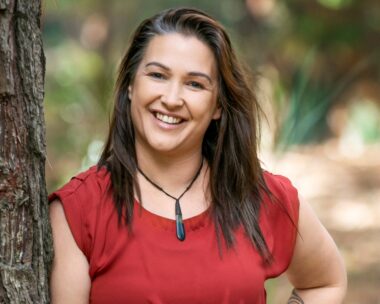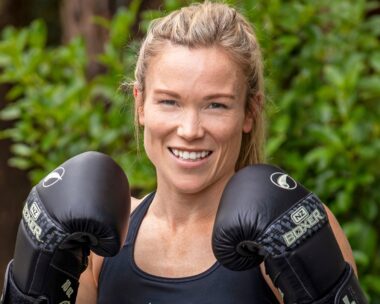Girl Guide biscuits; they’re as much a Kiwi icon as musician Dave Dobbyn and, coincidentally, have been around for exactly the same length of time – 60 years.
It’s a diamond anniversary also shared by Morrinsville grandmother Ariel McCracken who, as a 9-year-old girl from Lower Hutt, was one of the first New Zealand Brownies to take part in the inaugural biscuit sale in 1957.
Back then, the biscuits were distributed to “the provinces” in large tins before being sold by Guides and Brownies door-to-door, an increasingly sporadic practice now given safety concerns and the advent of the cashless society.
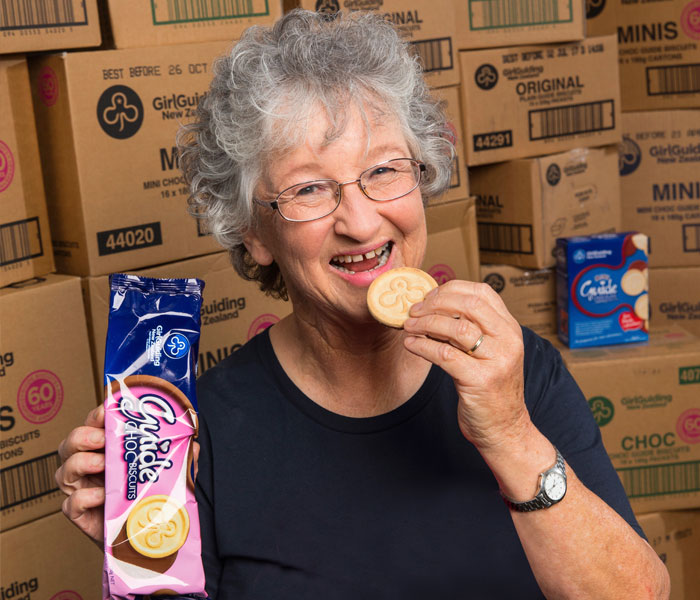
“In those days, we didn’t need to have an adult with us although there were houses we knew not to go into,” recalls Ariel, now 70.
“I would put the tin on the back of my bike and then walk around the streets knocking on doors. One lady would buy them for her cat, another lady bought them for her dog and I’ve even had someone who said their parrot liked them.
“We were told to approach the front door only and never if there was a dog loose on the property. We were always polite and said ‘thank you’, even if the householder didn’t buy any biscuits.”
A circular letter to “all Provincial Secretaries, Commissioners and all Organisers of Biscuit Sales” from the Guides’ Dominion Headquarters in Hastings, dated February 6, 1959, noted the biscuits would be sold for one shilling and sixpence per half pound.
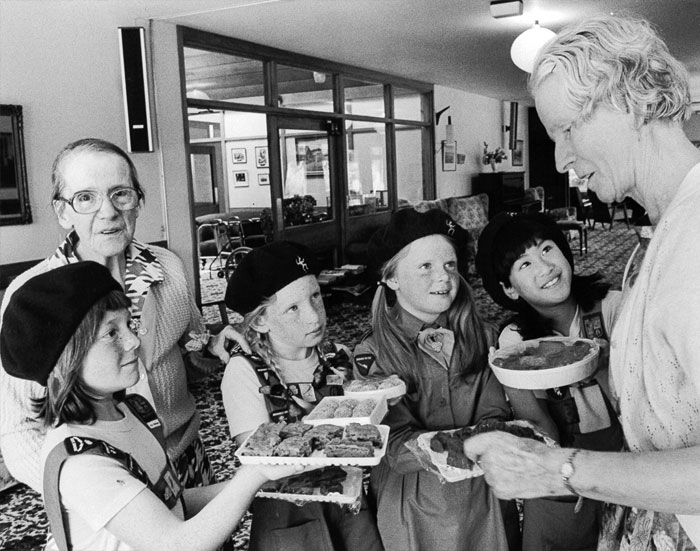
Karori Brownies, 1983.
“Many months of work were involved for Dominion Headquarters, so please do your share and make this as light as possible,” it said.
And Ariel’s certainly done her bit to lighten the load. She jokes that she attended Brownies even before she was born – her mother Audrey, who was then pregnant with Ariel, took her two pet geckos along to a show-and-tell at the local Brownies meeting.
Although Audrey eventually became a company leader, she was forbidden from joining the movement as a child.
Explains Ariel, “It was just after the First World War. My Granddad had lost one brother and many of his friends. At least two of his brothers had returned injured and were paralysed in hospital.
“He just did not like the idea of his 7 or 8-year-old girl ‘marching around the streets in uniform with a [pocket] knife on her belt’. Those were his very words. He was against women bearing arms.”
Ariel herself moved right through the ranks – from Brownie to Guide through to Ranger, Guide leader, Pippin leader, district coordinator and, internationally, a New Zealand guiding representative.
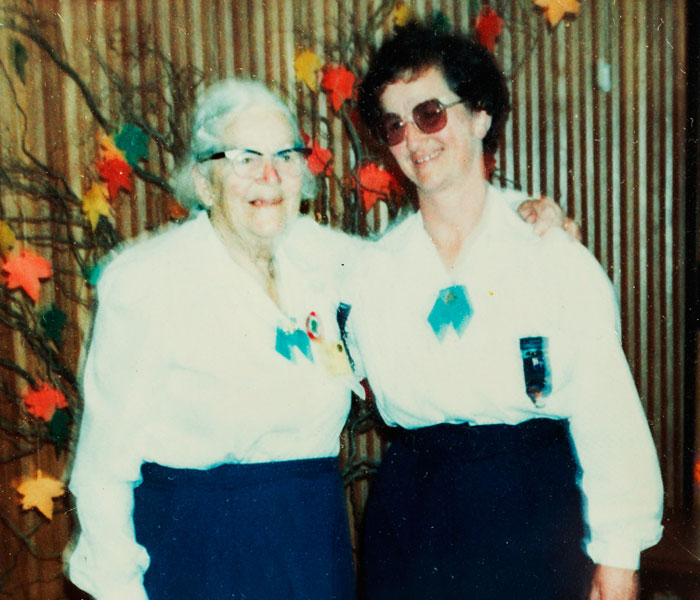
Ariel with mum Audrey, who was banned from Guides as a child.
She still has Norwegian and Canadian penpals she met through Guides who have, on occasion, received packets of Kiwi Guide biscuits through the post.
Her younger sister Olwyn – who remembers Ariel “dragging her around” to sell biscuits – was involved too, as was her daughter Raewyn.
Ariel laughs as she evokes images of the hallway of her parents’ home lined with biscuits ready to be packed into her mum’s Hillman Husky for delivery.
She recalls making bread and cakes, and roast dinners, in the big old tins over camp fires.
“Most of the tins got sent back, but we were allowed to keep any that got damaged and they came in handy for all sorts of things,” she tells.
Yet another memory is of being confronted by a knife-wielding man when she was going door-to-door with Raewyn, a Pippin at the time.
“’Ooh, Girl Guide biscuits, we love those’, he said before glancing down and apologising for the knife. ‘I was just cutting up the meat for dinner’.”
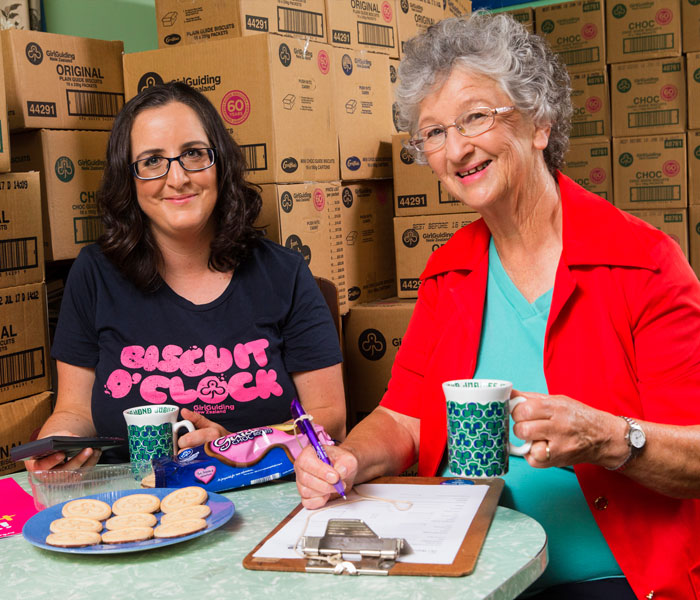
With her daughter Raewyn, who still helps with selling the bikkies.
The biscuits were originally made by Cadbury Fry Hudson in Dunedin following an approach by former General Secretary Marie Iles, who had seen the success of “Girl Scout cookies” in the Unites States.
The recipe for the biscuits, now made by Griffin’s, remains a secret. A book on the history of guiding in New Zealand notes it was trialled and approved before the first batches were baked.
With the exception of a change from artificial vanilla flavour to natural vanilla flavour (in 2011), it is understood the recipe hasn’t changed. Chocolate biscuits were introduced in 1999 and “minis” in 2003.
Ariel is not sure how many packets of biscuits she has sold over her six decades – “it would be thousands” – but she’s certain of one thing. They should never be dunked.
“No, they are much better crisp.”
Biscuit basics
• About 28 million Girl Guide biscuits are sold in New Zealand each year.
• Originals are still the most popular.
• Biscuit sales make up around 33 per cent of the association’s income.
For more from New Zealand Woman’s Weekly, visit our Facebook page, and follow us on Instagram.
.jpg)


